Stop NATO (Also in rickrozoff.wordpress.com)
End Of The Year: U.S. Recruits Worldwide For Afghan War
Rick Rozoff
Ded. 23, 2009
The first of 33,000 more U.S. troops have arrived in Afghanistan for a Christmas surge and they will soon be joined by as many as 10,000 additional non-American troops serving under NATO in the International Security Assistance Force (ISAF). Washington will have over 100,000 uniformed personnel and tens of thousands of new military contractors in the South Asian war zone, and with more than 50,000 other NATO and NATO partner forces present total troop strength will exceed 150,000.
Except for a modest amount of troops assigned to the NATO Training Mission - Iraq in Baghdad, the U.S. with its 120,000 troops is now largely alone in that country. NATO, especially new NATO, member and candidate states were ordered to transfer their forces from Iraq to Afghanistan starting approximately a year ago and are now redeploying soldiers from missions in Kosovo, Lebanon and Chad to the same destination. The Afghan battlefront, then, currently has the largest amount of military forces stationed in any war zone in the world. [1]
Troops from NATO countries stationed in Bosnia, the Central African Republic, Chad, Lebanon and off the coast of Somalia are currently assigned to European Union missions (European warships also participate in NATO's Ocean Shield naval interdiction in Somali waters and the Gulf of Aden) and their transfer to the South Asian war front indicates the virtual interchangeability of armed units assigned to NATO and the European Union. [2]
Since the beginning of this year's escalation of the war in Afghanistan and into neighboring Pakistan, Western public figures and media have dwelt frequently and at length on the war being a - or the - test for the North Atlantic Treaty Organization, ostensibly the major watershed and crucible in its 60-year history.
When the bloc, the world's only military alliance, invoked its Article 5 mutual assistance clause in September of 2001 to support its leading member, the U.S., in its invasion and occupation of Afghanistan, the Alliance was fresh on the heels of its first-ever war: The 78-day bombing campaign against Yugoslavia in early 1999, the first all-out military assault targeting a European nation since Hitler's and Mussolini's attacks and invasions of 1939-1941.
By activating Article 5 - "The Parties agree that an armed attack against one or more of them in Europe or North America shall be considered an attack against them all [and] will assist the Party or Parties so attacked by taking forthwith" - NATO enlisted for its first land war and its first war in Asia.
It also exploited its effective war provision to launch Operation Active Endeavor in early October of 2001, a comprehensive, airtight naval surveillance and interdiction program throughout the entire Mediterranean Sea that monitors all activity in NATO's new mare nostrum (our sea) and dominates all access points into the world's most important sea: The Strait of Gibraltar, the Dardanelles Strait and the Suez Canal, connecting the Mediterranean with the Atlantic Ocean, the Black Sea, the Red Sea and thence to the Indian Ocean, respectively.
The U.S.-led military alliance gained control over that vast stretch of strategic waterways by adopting the American post-September 11, 2001 pretexts of combating terrorism and weapons of mass destruction. The first was the rationale for invading Afghanistan, the second for invading Iraq.
Three years after the inauguration of Active Endeavor, which continues with full force to this day, the NATO summit in Turkey developed the Istanbul Cooperation Initiative which upgraded military partnerships with the members of the bloc's Mediterranean Dialogue - Algeria, Egypt, Israel, Jordan, Mauritania, Morocco and Tunisia - and targeted the six members of the Gulf Cooperation Council - Bahrain, Kuwait, Oman, Qatar, Saudi Arabia and the United Arab Emirates - for a similar relationship, one modeled on the Partnership for Peace program that prepared twelve Eastern European nations for accession to full NATO membership over the last decade. [3]
In ten years the military bloc has expanded from its Cold War confines, North America and Western and Southern Europe, into almost all of Eastern Europe including former Warsaw Pact states and Soviet and Yugoslav republics. The bipolar military division of Europe symbolized by the Berlin Wall [4] that ended twenty years ago has been replaced by a unilateral expansion of the world's sole military bloc toward Russia's western borders, from the Baltic to the Black to the Adriatic Seas. From there it has extended its reach through deployments and partnerships into the South Caucasus, Northeastern and Central Africa, and Central and South Asia.
If Afghanistan is a trial or the test of NATO in its sixtieth year, it is not so for the NATO of 1949 but of what leading Alliance officials and other proponents in recent years have referred to as 21st century NATO, expeditionary NATO, global NATO: The first attempt in history to forge an international military alliance. An international armed network with the world's self-proclaimed exclusive superpower and its nuclear arsenal as its foundation and at its core.
The "asymmetric" war in Afghanistan now in its ninth year is a seminal venture for NATO in several respects. In addition to it signifying the bloc's first ground war and its first colonial excursion outside the Euro-Atlantic world, the drawn-out and by all indications indefinite campaign in South Asia is laboratory and training camp, firing range and convergence point for the U.S.'s consolidation of a global military strike and occupation force first tested in Kosovo in 1999 with 50,000 troops under NATO command, then in Iraq after 2003 with tens of thousands of troops from NATO, new NATO and NATO candidate nations. [5]
Washington and Brussels have now dragooned armed contingents from fifty nations on five continents to serve under one commander, General Stanley McChrystal, head of all U.S. and NATO forces in Afghanistan. New contributing states include geographically remote and otherwise diverse countries that include Colombia, Bosnia, Georgia, Montenegro, Mongolia, Armenia and South Korea. All except Mongolia either are or have recently been the scenes of wars or at any moment may be. As numerous statements by political and military leaders of nations supplying troops to NATO for the Afghan war have established, that battleground is an ideal location and opportunity for gaining real-life combat experience for application at home. The bulk of countries in this category border Russia on the latter's northwestern and southwestern flanks. [6]
The defense minister of Austria, one of only a small number of European nations now yet a full NATO member, recently lamented that American officials were pressuring his country to provide more troops for deployment to Afghanistan, having to remind readers of one of his country's newspapers that his is still a sovereign state. As reported in Deutsche Welle, "Austria and the United States are quarreling over Austria's troop levels in Afghanistan. The Austrian government says it feels strong pressure from the US to send more of its troops to the NATO mission."
The South Korean daily Dong-A Ilbo wrote on December 21 that "NATO has invited for the first time a Korean military delegation to a meeting next year of countries sending troops to Afghanistan.
"The dispatch of Korean troops scheduled for July will likely help expedite
far-reaching military cooperation between Korea and NATO." The source added that with the advent of the new Lee Myung-bak government in Seoul "As Korea actively participates in international security cooperation, including its decision to send troops to Afghanistan and fully join the Proliferation Security Initiative, NATO's assessment of Korea is changing." The Proliferation Security Initiative (PSI) is a another mechanism, linked with the U.S. thousand-ship navy project as well as NATO's Operation Active Endeavor, to enmesh more and more nations around the world into an international military network run from Washington. [7]
South Korea is already what is identified by NATO as a Contact Country partner, the others being Japan, Australia and New Zealand, serving as the foundation stones for a rapidly emerging "Asian NATO" that includes Singapore and Mongolia - both of whom have or will have troops serving under NATO for the first time, in Afghanistan - as well as the Philippines, Thailand, Brunei and future prospects like India, Bangladesh and Cambodia and the five former Soviet republics in Central Asia as well as Afghanistan and Pakistan. [8]
READ MORE
================
Stop NATO
Blog site:
http://rickrozoff.wordpress.com/
To subscribe, send an e-mail to:
rwrozoff@yahoo.com
or
stopnato-subscribe@yahoogroups.com
Daily digest option available.
==============================
Friday, December 25, 2009
Subscribe to:
Post Comments (Atom)

![[URGENT PLEA: In Update] EMERGENCY in GANGJEONG Since AUG. 24, 2011](http://2.bp.blogspot.com/-3iz8k-USXVY/TlmRYhhIYtI/AAAAAAAAL2c/9dbF85ZIkIs/s227/jejusit.jpg)
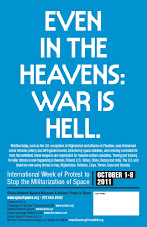
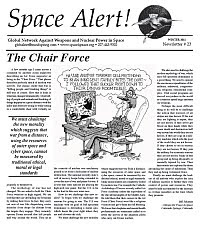

![[Solidarity from Japan for the Jeju] 253 individuals and 16 groups/organizations](http://2.bp.blogspot.com/_gnM5QlRx-4c/TR_YeNVE1yI/AAAAAAAAHWQ/ARyf6oQN0S0/S227/jeju_12_10j.jpg)
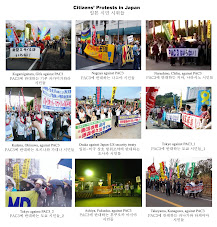
![[Translation] Korean organizations' statement: Immediately cancel the joint ROK-US drill Nov 26](http://2.bp.blogspot.com/_gnM5QlRx-4c/TPOE8VKXHFI/AAAAAAAAGlM/8lryt-8sFjc/S227/1.jpg)
![HOT! [Hankyoreh Hani TV] Beneath the Surface: the investigation into the sinking of the Cheonan](http://4.bp.blogspot.com/_gnM5QlRx-4c/TOI83qht8aI/AAAAAAAAGXU/22SW6Q5ntV8/S227/HaniTV%2BCheonan.gif)

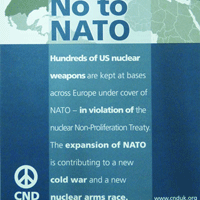

![[Translation]Statement against illegal inspection and unjust lay-off by the Kunsan USAFK!(Nov_2010)](http://4.bp.blogspot.com/_gnM5QlRx-4c/TOPLsVkZMqI/AAAAAAAAGZs/3YnnckIyAaY/S227/gunsan%2Bprotest.gif)
![[Translation] Korean organizations' statement against dispatching special force to the UAE on Nov.](http://4.bp.blogspot.com/_gnM5QlRx-4c/TOP95zHXlCI/AAAAAAAAGak/E0Ug1XtUFfM/S227/antiwarpeace.jpg)
![[Translation] Stop, Joining MD!: South Korean activists' statement and writing on Oct. 25, 2010](http://3.bp.blogspot.com/_gnM5QlRx-4c/TOP7Es4_2sI/AAAAAAAAGac/eWVMPD-U4p0/S227/StopMD.jpg)
![[In Update] People First, NO G-20 (Nov. 6 to 12, Korea)](http://2.bp.blogspot.com/_gnM5QlRx-4c/TJd53XBzHlI/AAAAAAAAFQo/ldO9JPE3eqo/S227/left21_G20.jpg)
![[International Petition] Stop US helipad plan in Okinawa to save great nature](http://4.bp.blogspot.com/_gnM5QlRx-4c/TKC2AHRNzBI/AAAAAAAAFUo/yGWXODTw_uM/S227/yanbaru_w.jpg)

![[Global Network] against the first launch of Quasi-Zenith Satellite, Japan, on Sept. 11, 2010](http://4.bp.blogspot.com/_gnM5QlRx-4c/TIowa1boy4I/AAAAAAAAFDI/82rAi98uq-c/S227/Qzss-45-0_09.jpg)

![[In update] Some collections on the Koreans’ protests against the sanction & war on Iran](http://4.bp.blogspot.com/_gnM5QlRx-4c/TJMvke6t8zI/AAAAAAAAFO4/tamQ8LUnOOA/S227/No+Sanction+on+Iran.jpg)
![[Three International Petitions] to End the Korean war and peace treaty(or peace resolution)](http://1.bp.blogspot.com/_gnM5QlRx-4c/THef7bzWxYI/AAAAAAAAE44/wwdzSDfYhdw/S227/border.jpg)
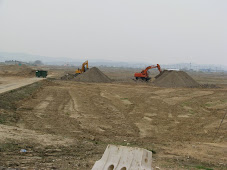


![[Collection of Documents] No Base Learning and Solidarity Program_Korea(June 14 to 20, 2010)](http://1.bp.blogspot.com/_gnM5QlRx-4c/TCTvVuN8NeI/AAAAAAAAEek/8vBJVaHdk10/S227/No-Base-banner.jpg)
![Site Fwd:[John Hines] A U.S. Debate coach’s research trip on the Issues of Korea](http://3.bp.blogspot.com/_gnM5QlRx-4c/TINCO36mzzI/AAAAAAAAE_w/Rds12NcBOXM/S227/Jeju-Peace-Tour.jpg)


![[News Update] Struggle Against the Jeju Naval Base since Jan. 18, 2010](http://1.bp.blogspot.com/_gnM5QlRx-4c/S1vvWaP25uI/AAAAAAAACkg/QvpW1tgOlKM/S226/scrum1.jpg)


![[Urgent] Please spread the Letter!: There was no Explosion! There was no Torpedo! (May 26, 2010)](http://4.bp.blogspot.com/_gnM5QlRx-4c/S_9JmsKEU7I/AAAAAAAAEP8/sAWjSPqxzUI/S227/grounded.jpg)
![Text Fwd: [Stephen Gowans]The sinking of the Cheonan: Another Gulf of Tonkin incident](http://1.bp.blogspot.com/_gnM5QlRx-4c/TAL_FtYKQ-I/AAAAAAAAERE/NEEMijiEcRM/S227/lee-myung-bak.jpg)
![[Japan Focus]Politics in Command: The "International" Investigation into the Sinking of the Cheonan](http://1.bp.blogspot.com/_gnM5QlRx-4c/TBMJ2syJzyI/AAAAAAAAEZU/uTYZccU5vyk/S227/wen_jiabao_and_lee_myungbak.png)
![[Japan Focus] Who Sank the SK Warship Cheonan? A New Stage in the US-Korean War and US-China](http://2.bp.blogspot.com/_gnM5QlRx-4c/S_iQ2vE5ZpI/AAAAAAAAEOU/Oo1SPcAe8FE/S227/buoy_map.gif)
![[Updated on 12/13/10] [Translation Project] Overseas Proofs on the Damages by the Military Bases](http://4.bp.blogspot.com/_gnM5QlRx-4c/S-qSj59gPLI/AAAAAAAAEGM/mwjlFtPE-jo/S227/missile.jpg)
![[International Petition] Close the Bases in Okinawa](http://3.bp.blogspot.com/_gnM5QlRx-4c/S8-z3DYNwNI/AAAAAAAADo4/OswTSchK09M/S227/2.jpg)

![[In Update]Blog Collection: No Korean Troops in Afghanistan](http://4.bp.blogspot.com/_gnM5QlRx-4c/SwnlLD9IewI/AAAAAAAAB9E/oUPssnpNidA/S226/No-Troops-to--Afghanistan.jpg)


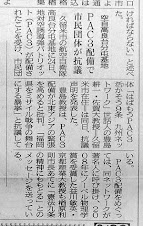

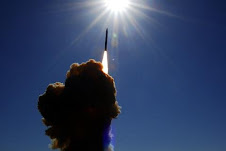






No comments:
Post a Comment